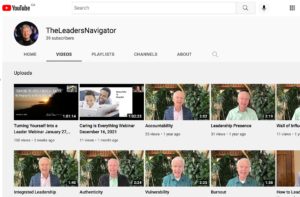“No one is to be called an enemy, all are your benefactors, and no one does you harm. You have no enemy except yourselves.” — Saint Francis of Assisi
I love helping people succeed in business by helping leaders succeed with people. What I’ve learned is that it’s a lot easier to talk about how to get along with people than it is to actually do it. Dealing with differences of opinions and goals, differences of approaches, or differences of personalities creates some of our most frustrating and rewarding opportunities for growth and contribution. We are here to learn, and people who trigger frustration in us can often be our greatest teachers. Here are some thoughts about dealing with resistance.
I live in the beautiful foothills of the Canadian Rockies and with our warm summers, we like to stay home in the summer and take our holidays in the winter. In addition to writing, developing new products, and networking, my summers are for relaxing, spending time with my family, and puttering around the house. And this year I have come up against a roadblock.
Behind our home is a creek with a great swimming hole. It’s a sanctuary for our family and neighbors. I go there for quiet contemplation and renewal. And we have a trespassing issue. On hot days people love to come and use the creek, and, while the creek itself is public land, they have to trespass to get there. With the great weather this summer, there are a lot of people there making a lot of noise, disrupting my serenity.
While the police are happy to come when people light fires, bring in booze and drugs, or have loud parties late at night, we can’t expect the RCMP to be there every minute to chase away sometimes well-intentioned people who simply want to enjoy the creek. We are, for the most part, responsible for managing the problem on our own.
I, along with our wonderful neighbors, who share ownership of the land surrounding the creek, are up-in-arms. Signs have been posted, saying that we will prosecute trespassers. And the signs get torn down. When we get angry, we confront the trespassers and, for the most part, are either ignored or argued with. I feel like an activist this summer, fighting for a cause. I believe I am right and that, indeed, the cause is a worthy one.
However, I notice that the negative energy that flows into what we are trying to do actually generates increased opposition, creating “enemies.” What you resist, persists.
This is a good opportunity for me to realize that the problem is not “out there,” it is in me. I teach people not to be victims. So now I get to practice what I preach. My “enemies” are not my enemies at all, but actually my greatest teachers.
My work is to let go of my craving for control in order to feel safe. I will never have enough power to control this situation. Letting go is about acceptance, but this is not the same as passive resignation. What I’m ultimately letting go of is the struggle. By accepted life on life’s terms, I can take responsibility for my situation and for all those events I see as problems, but still change the things I can. Val and I still love to walk the creek at night and will call the police if there are people down there breaking the law. In the daytime we will continue to remind them that they are on private property and ask them to be respectful of the land and surrounding property. Not with resistance or anger or negativity. Simply a request. And we will have continued venting sessions with the neighbors as we get support for expressing and letting go of our anger about an impossible situation.
I teach leaders that their ability to influence will come from their own peace of mind. When we are present, relaxed and calm amidst the turmoil, then we are able to make contact. And with this contact comes impact. When stressed or fearful or angry or preoccupied, the connection is broken.
How is your inner state? What are you resisting? What do you need to let go of to make room for serenity? What you resist will persist. What you let go of won’t necessarily give you what you want, but an inner state to create much more.
As I write this blog my sixteen-year-old daughter, Chandra, played the youtube video of Nick Vujicic, the man with no arms and no legs who reminds groups about focusing on what you have, not what you don’t have. That’s my focus for today, to stay conscious each moment and pay attention to my blessings, not my frustrations. What you appreciate, appreciates.


